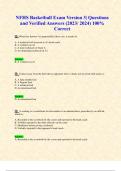Samenvatting
volledige samenvatting purchasing and supply chain management (inclusief notities uit de les)
- Instelling
- Odisee Hogeschool (Odisee)
deze samenvatting bevat alle leerstof van hoofdstuk 1-4, 6-8, 10 en 11. in de samenvatting zitten voorbeelden en notities van de les verwerkt.
[Meer zien]













